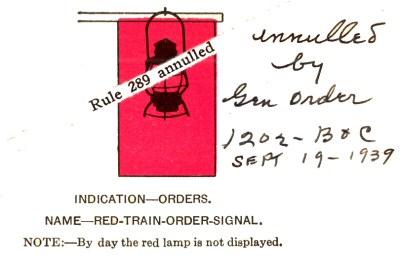

Traditionally this panel was made of Armco iron, measuring 4 feet 4 inches in diameter, with 7-3/4 inch holes punched in it for the lamps. Lamps were mounted on bars with a circular background panel affixed over the lamps and shades to prevent backlighting. However, before PRR adopted the signal for widespread application, the form of the position light signal head was refined: Each head used rows of three lights oriented around a common center lamp with the outer lamps forming a circle. After a few years of service these position lights were deemed successful. Aspects mimicked those of upper quadrant semaphores by using rows of four lamps. Early position light signals featured large background shields to protect the view from effects of harsh backlighting. PRR’s first position lights were installed in 1915 along the Main Line between Overbrook and Paoli, Pennsylvania, in conjunction with its new 11,000-olt AC overhead electrification. I researched the development of PRR’s Position Light signals for my book Railroad Signaling. Here’s an excerpt: The exposure was at ISO200 f/5.6 1/500th second with Canon 7D. While the signals are incidental, they offer a touch of PRR heritage. In the distance an eastward train is climbing. I’ve set the 100-400mm at its maximum focal length to capture a set of light helpers drifting west toward the signal bridge near Portage.

I’m looking downgrade (west) from the ‘Railfan’s Overlook’ at Cassandra, Pennsylvania. Be forewarned: the signals that protected trains hauled by PRR’s magnificent K4s and M1b steam locomotives and have survived these long decades will soon pass from the scene. I worked this area intensively in summer 2010, making an effort to capture trains passing former PRR Position Lights. Among those to go are favorites on the ‘west slope’ (between Gallitzin and Johnstown, Pennsylvania). The writing is on the wall for these signals. I’ve adjusted the 100-400m lens to 180mm, and closed the aperture slightly to f/10.0. This one offers a more dramatic angle on the leading General Electric DASH9-40CW while keeping the signals in view. Norfolk Southern 12G is crawling upgrade, which gives ample time to expose many images. By using a long focal length aimed directly at the signals I’ve maximized the effect of the position light arrangement. The lens is set at 285mm image exposed at ISO200 f/9.0 1/250th second (camera RAW adjusted in Photoshop). In this view of NS freight 12G, I used a 100-400mm Canon zoom with my Canon 7D mounted on a Bogen tripod. This arrangement stems from a Conrail-era modification in the 1980s, when it converted the line from PRR’s directional four-track system (the two south tracks were for eastward trains and two north tracks reserved for westward trains). Here NS maintains three main tracks with the center track signaled in both directions. I set up on the outside of a curve near Lilly, Pennsylvania, to get a good view of the automatic (intermediate) signals at 254.7. The morning of July 1, 2010, was clear and bright. While Norfolk Southern has been gradually replacing its PRR era signals with color lights, I’ve learned that a recent NS application with the Federal Railroad Administration includes elimination of most remaining wayside signals from its former PRR Main Line between Harrisburg and Pittsburgh. However, a wise photographer will have noted that this style of signal hardware is out of favor. Among these are PRR’s iconic Position Light style signals that date to the steam era, and have survive the decades of change. While the PRR vanished into Penn Central in 1968, key PRR infrastructure has allowed necessary visual cues that retain elements of the old railroad. In nearly three decades of photography along the former Pennsylvania Railroad Main Line, I’ve tuned my images to clues of this route’s past. Anticipating change is key to documenting the railroad.


 0 kommentar(er)
0 kommentar(er)
